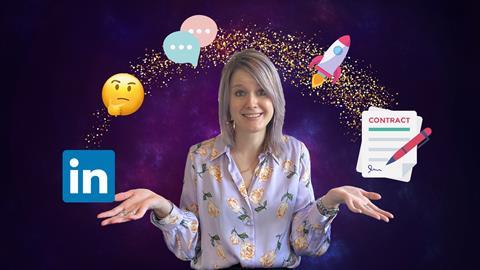Isabelle Kohler, our new contributor, recounts her journey towards getting to write for C2W International and how you can create such opportunities yourself.
I’m passionate about writing and telling stories. I’ve always enjoyed writing – I started journalling when I was 10 years old, and not a day goes by without me writing down a few lines. As a teenager, one of my dreams was to become a columnist for Cosmopolitan magazine. Two decades later, I’m thrilled that a part of this dream has come true (and since you’re reading this column in C2W International, you can guess which part).
But how did I manage to get to write for C2W International? Did I wake up one day to an email from the Editor-in-Chief, telling me she had read one of my research papers and found my writing skills fantastic? Or did the KNCV team approach me during a conference, asking me to write for them?
Well, the truth is, it all began on LinkedIn.
A few months ago, I started posting content related to academic life on LinkedIn. I had several goals in mind: sharing my knowledge with the younger generation of scientists, building a community for early-career researchers, raising attention before launching my company, and connecting with the outside world while navigating Long Covid. The instant gratification and attention my posts received were quite fulfilling, so it became a regular habit.
Actually, I also had another aim – this one being a bit more secret: practicing my writing skills, defining my style, and – hopefully – getting noticed for this. Think of it as an online writing portfolio.
After just a few weeks of this new routine, the big “woohoo” moment happened: Jan-Willem Toering, the KNCV Director, commented on one of my posts: “You could always consider starting a career as a columnist 😉”. Fireworks, sparks of joy, champagne – everything. He had opened a door, I just had to step through it. The rest is history.
This story is just the tip of the iceberg. I have seen countless instances where LinkedIn played a crucial role for (PhD) students in finding internships, PhD/postdoc positions, or jobs. LinkedIn is not just a digital resume: it’s a dynamic space to showcase your scientific journey, your milestones, and your aspirations. Think of it as a continuous and interactive conference, where your posts are your presentations, and your interactions are networking opportunities.
Does this make you scared? Or are you unsure of where to start? Start small by first making sure your profile (including your photo and your headline) are up to date! Then, start contributing to discussions in a thoughtful way and expand your network by sending personalized invitations. Once you feel comfortable, post regular updates on your achievements (new internship, article published, new collaboration starting, etc.) or topics you find interesting to share. Did you know that only 1% of active LinkedIn users post content? Showcasing your projects or research on LinkedIn can significantly raise your visibility in the scientific community. This increased visibility can lead to unexpected opportunities, just as it did for me.
My advice to aspiring scientists? Embrace LinkedIn not only as a tool for job searching, but as a platform for professional growth and branding. Your next big move might just be a post, connection, or comment away!
PS: Besides being active on LinkedIn with my personal account, I also post on NextMinds’ page, my company. The perfect opportunity to practice your commenting skills! You can also visit NextMinds website to learn more about my work and how I can help you, or you can sign up to the monthly newsletter.



















Nog geen opmerkingen